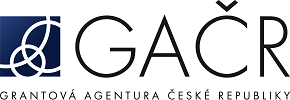Project detail
Rheological properties of thin lubricating films in point contacts at transition to mixed lubrication
Duration: 1.1.2021 — 31.12.2023
Funding resources
Grantová agentura České republiky - Standardní projekty

On the project
Řada strojních prvků je dnes provozována v těsné blízkosti smíšeného mazání a proto roste význam jeho přesného popisu a modelování. Přechod do smíšeného mazání je spojen se zvýšením tření a opotřebení. Poslední experimentální výsledky naznačují, že k nárůstu tření dochází dříve než k přímému kontaktu mezi povrchy, jak je teoreticky předpokládáno v aktuálních modelech smíšeného tření. V současnosti neexistuje teoretický model, který by využíval reologické vlastnosti a tok maziv v tenkých nanometrických filmech, které jsou formovány v bodových kontaktech před přímým stykem nerovností. V rámci projektu bude využita fluorescenční metoda pro in-situ studium toku maziva, tření a tloušťky mazací vrstvy. Cílem je poskytnout skrz základní výzkum experimentální důkaz pro jednu ze tří základních hypotéz ohledně reologických vlastností tenkých mazacích filmu, které vysvětlují zvyšování tření. Výstupem budou informace pro nový přístup v modelování tření ve smíšeném režimu mazání.
Description in English
Nowadays a number of machine parts are operated in close vicinity to mixed lubrication regime, therefore, there is growing interest of its precise description and modelling. Transition to mixed lubrication is connected with increase of friction and wear. Recent experiments show that friction increase take place before direct solid/solid contact contrary to present theoretical models. There is no theoretical model which use rheological properties and flow behaviour in nanogaps, formed in point contacts before direct roughness solid-to-solid contact. In the project, measurements of lubricant flow by a fluorescence method, friction and film thickness will be performed in-situ. Goal is to provide through fundamental research experimental verification for one of three main hypotheses about rheological properties of thin lubricating films explaining friction increase. The impact of the project will help to define new approach for friction modelling in mixed lubrication.
Keywords
elastohydrodynamické mazání;povrchové nerovnosti;reologie;tok maziv
Key words in English
elastohydrodynamic lubrication, surface roughness, rheology, lubricant flow
Mark
21-28352S
Default language
Czech
People responsible
Šperka Petr, Ing., Ph.D. - principal person responsible
Dočkal Kryštof, Ing. - fellow researcher
Frýza Josef, Ing., Ph.D. - fellow researcher
Křupka Ivan, prof. Ing., Ph.D. - fellow researcher
Units
Institute of Machine and Industrial Design
- responsible department (24.4.2020 - not assigned)
Institute of Machine and Industrial Design
- beneficiary (1.1.2021 - 31.12.2023)
Results
HABCHI, W.; ŠPERKA, P.; BAIR, S. The role of the glass transition for EHL minimum film thickness. Tribology International, 2023, vol. 190, no. 12, ISSN: 0301-679X.
Detail
PROCHÁZKA, J.; VILIŠ, J.; DOBROCKÝ, D.; ŠPERKA, P. Modification of Diffusion Layers by Laser Shock Peening. Manufacturing TECHNOLOGY, 2022, vol. 22, no. 6, p. 724-732. ISSN: 1213-2489.
Detail
HAN, Y.; ŠPERKA, P.; WANG, J.; KŘUPKA, I.; HARTL, M.; LI, W.; WANG, X.; WEI-MIN, L. Influence of Free Water Droplets on Film Formation Under Point Contact Grease Lubrication. ASME Transaction, Journal of Tribology, 2023, vol. 145, no. 7, p. 074101-1 (074101-17 p.)ISSN: 0742-4787.
Detail
HABCHI, W.; ŠPERKA, P.; BAIR, S. Is Elastohydrodynamic Minimum Film Thickness Truly Governed by Inlet Rheology?. Tribology Letters, 2023, vol. 71, no. 3, ISSN: 1023-8883.
Detail
POLÁČEK, T.; ŠPERKA, P.; KŘUPKA, I. Liquid superlubricity of lubricants containing hydroxyl groups and their aqueous solution under rolling/sliding conditions. Friction, 2023, vol. 12, no. 1, p. 164-173. ISSN: 2223-7704.
Detail
Responsibility: Šperka Petr, Ing., Ph.D.